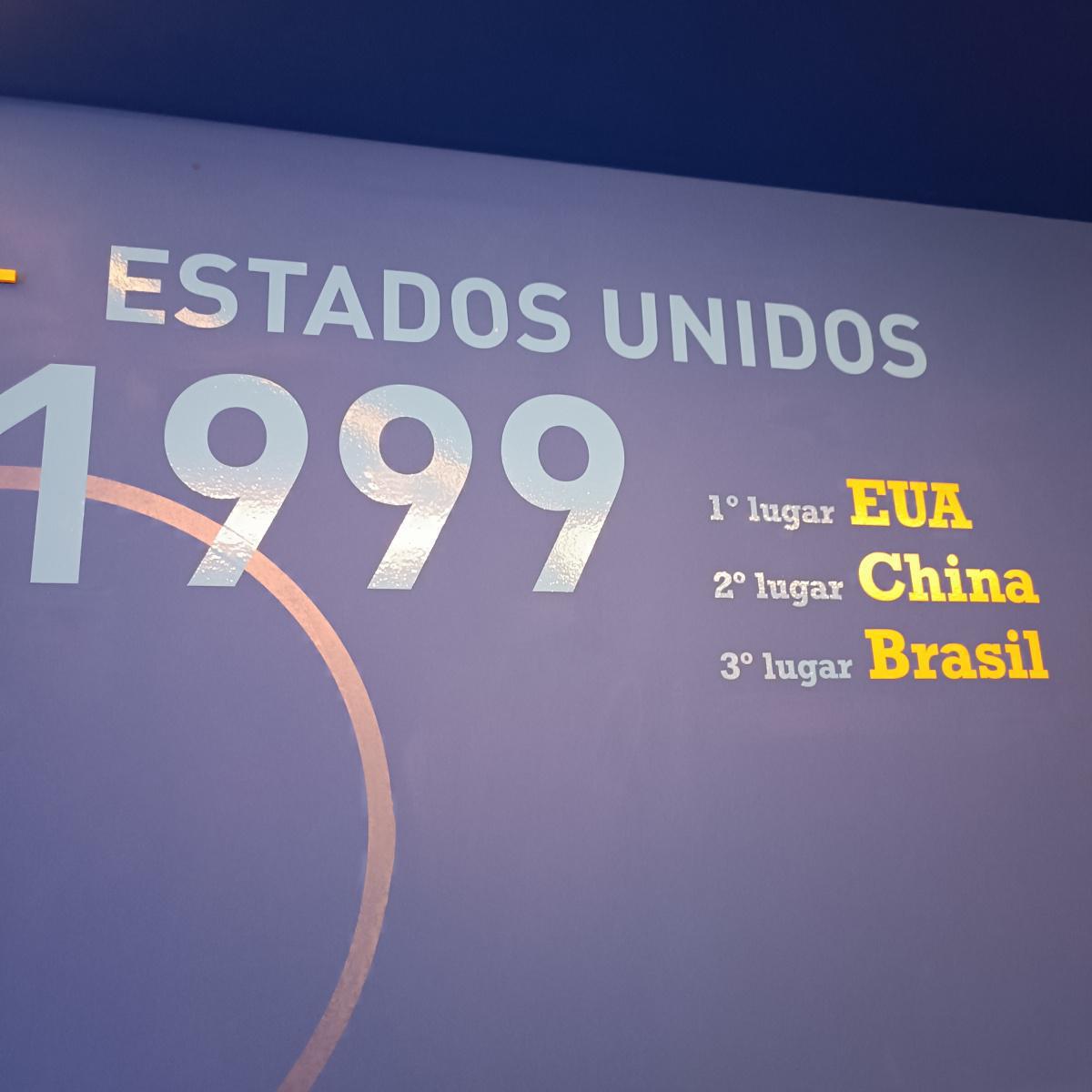Champions:
1st place: USA; 2nd place: China; 3rd place: Brazil
Queens of the Public
Towards advancement and recognition
The third edition of the World Cup took place in the United States, home to one of the most fanatical fans of the sport. Women's football was gaining increasing popularity around the world and, with this edition, it gained notoriety in the host country — a reality that is still distant in Brazil. The final matches had more than 90 thousand people in the stadium, almost reaching its maximum capacity. The audience for the sport on television broke a record, reaching 40 million people. The league also increased in size, from 12 to 16 participating teams.
With practically no incentive, the Brazilian team had a spectacular campaign, showing a lot of talent and a spirit of overcoming challenges. In the quarterfinals, after opening three goals against Nigeria, it conceded a tie. In overtime came redemption that took Brazil to the semifinals with a historic feat by Sissi: a free-kick golden goal that ended the match (by the rules of the time, the team that first scored in overtime was the winner, and the game was ended – hence the term golden goal). In that edition, the team won third place against Norway, its first official podium in World Cups.
BOX
A spontaneous gesture yielded an iconic image that projected women's football in the US media. The Cup final was played on penalties between the United States and China. The charge for the title came from the feet of Brandi Chastain, an American midfielder, who celebrated the goal by taking off her shirt, in ecstasy. The record of the exciting scene was on the cover of the renowned Sports Illustrated magazine, a debut that gave the sport another status.
Acknowledgments:
-
The Brazilian team won the 3rd place
-
“Sissi, the Empress”, as the Brazilian was recognized by the press at the time, was the top scorer in the Cup, alongside the Chinese Sun Wen, with seven goals, and won the Silver Ball as the second best player in the tournament.
History:
Sissi
Until the 1999 World Cup, Sisleide do Amor Lima, Sissi, was not known for scoring many goals. In the Brazilian national team, the Bahia native from Esplanada had already participated in the 1988 Experimental Tournament, the 1995 World Cup and the 1996 Olympics, but that year, she came to the tournament differently. Coming from a season at the São Paulo club, which had invested in structured work, the striker shone on the pitch. As number 10, she was instrumental in the excellent performance of the Brazilian team, whose collective talent — despite the lack of incentive — won the best position in World Cups, until then. In addition to being the league's top scorer, with seven goals, she won the Silver Ball as the second best player in the competition. After the Cup, her career continued in the United States, where she was recognized, and continues to this day working with the formation of youth teams.
Highlight:
Brandi Chastain
Sports Illustrated
Issue of Sports Illustrated magazine, July 19, 1999, with the iconic photo of Brandi Chastain on the cover.
Curiosities:
Goalkeeper Ann Chiejine of Nigeria has become the youngest player, male and female, at a World Cup. On her debut, she was 16 years and 34 days old.
Audios
Sissi — description of the importance of the golden goal against Nigeria
Subtitles
Team photo
Standing, from left to right: Kátia Cilene, Marisa Pires, Fanta, Cidinha, Maravilha and Elane. Crouched: Pretinha, Nenê, Sissi, Suzana and Raquel.
Sissi plays video
In the video, memorable shots of Sissi's performance in the 1999 World Cup.
Audio
Brief by Sissi (Sisleide Lima do Amor). Duration: 1min50s


